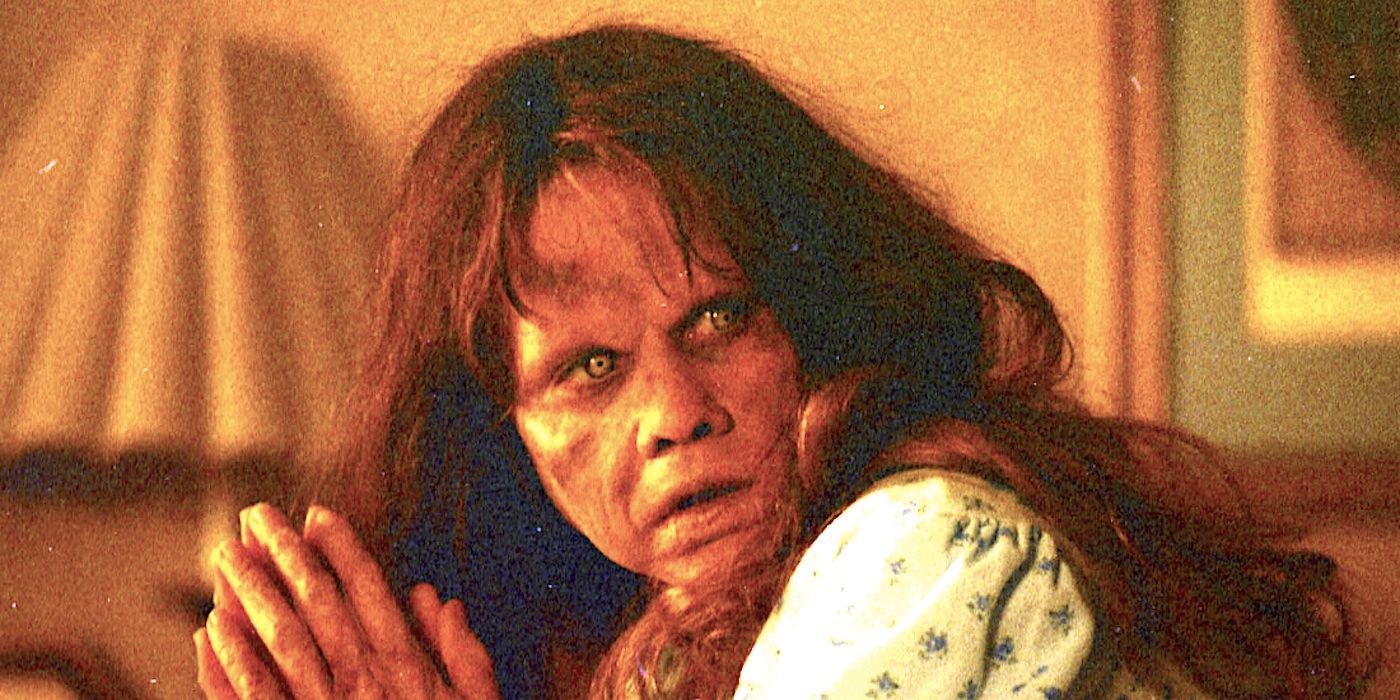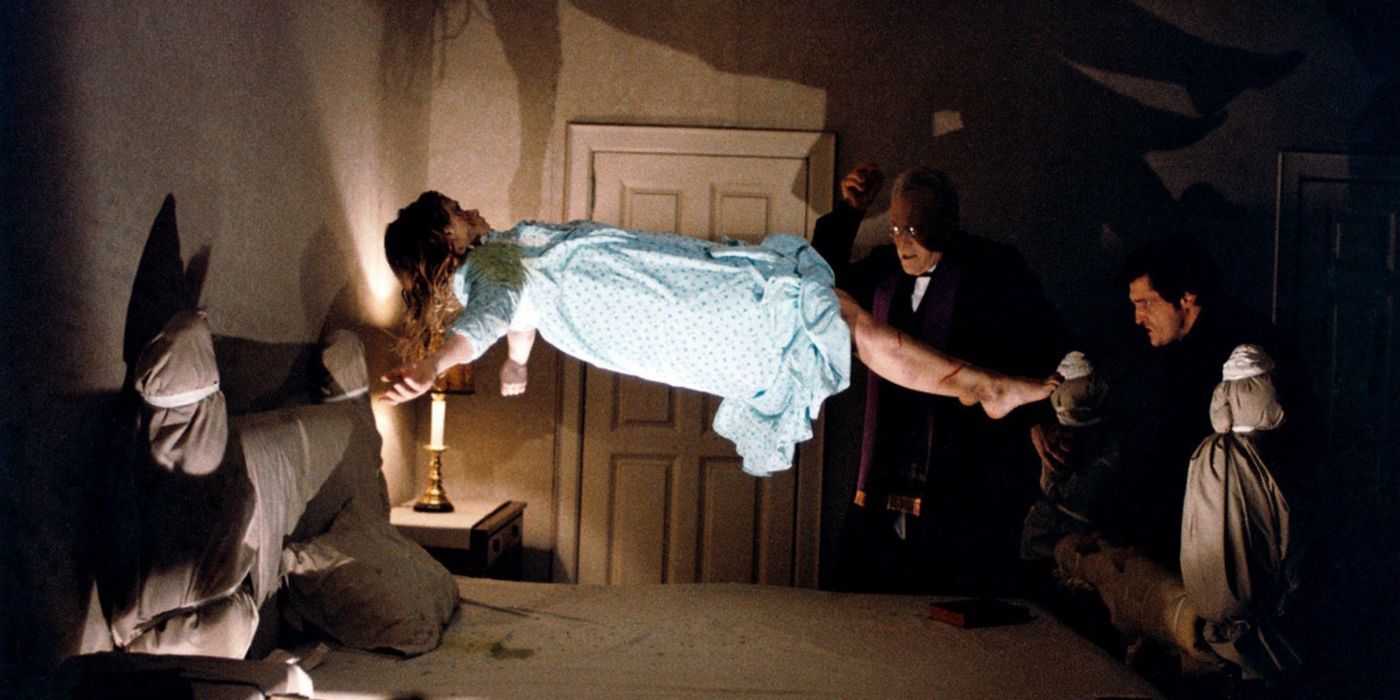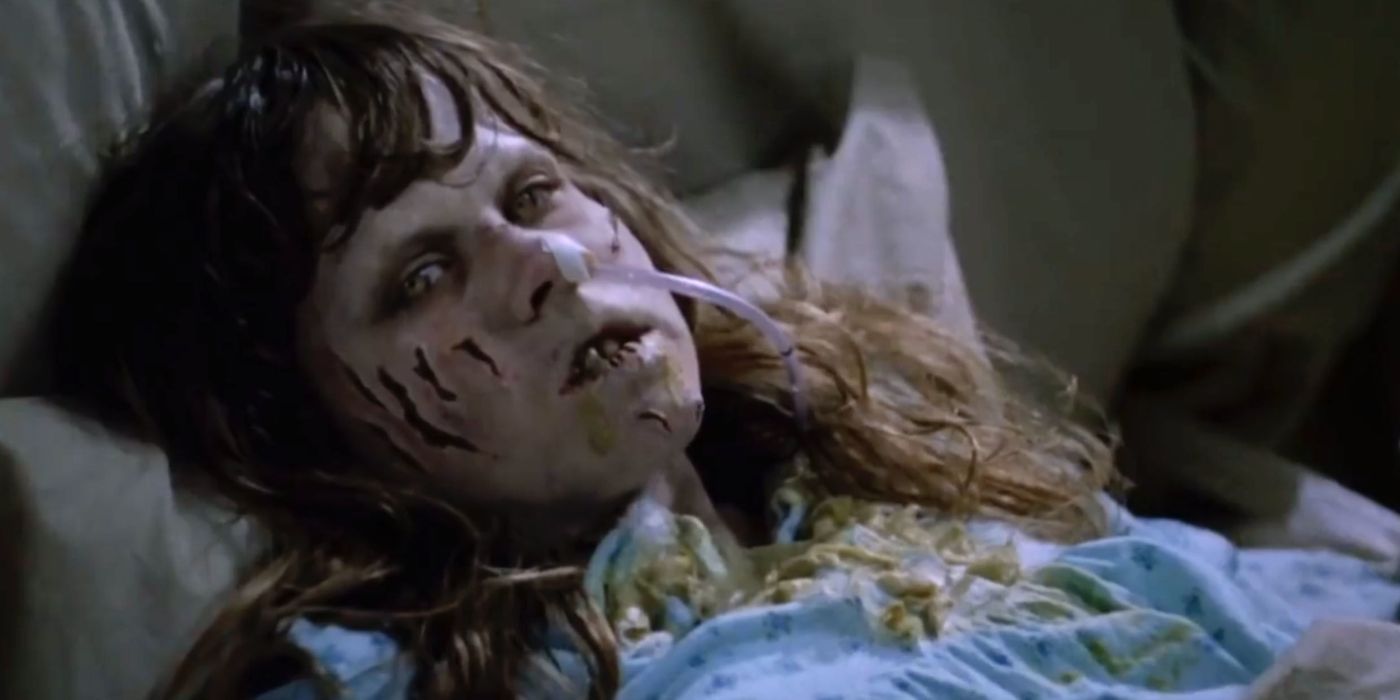Plenty of older movies haven’t withstood the test of time, particularly in certain genres, prompting audiences to ask just how scary classic horror movies like The Exorcist still are today. William Friedkin’s adaptation of William Peter Blatty’s 1971 novel is arguably the most famously known–or infamous–horror movie ever. Even those who haven’t seen it likely recognize the image of the possessed Regan MacNeil or the line “The power of Christ compels you!“, parodied so many times. The Exorcist is at once restrained and ambitious, horrifying and terrifyingly mundane.
While The Exorcist was a stunning achievement at the time, the real measure of a movie is whether it holds up for audiences decades later. Visuals grow outdated, actors pass, and audience interests shift and evolve over time. A truly classic horror movie will still get under a viewer’s skin, regardless. The best horror movies don’t rely on cheap jump scares or gimmicky visuals to grip an audience. Instead, they root their horror in a theme that resonates regardless of person, or culture, or decade. It’s exactly why The Exorcist is still so disturbing and scary today, still has that ability to fill the audience with a sense of dread.
The Exorcist’s Notorious Audience Reactions In 1973 Explained

By now, the extreme audience reactions to the 1973 release of The Exorcist are well-known. Reports of audience members walking out, fainting, vomiting, or passing out from fear and disgust have been circulated to the point of being the stuff of Hollywood legend. It’s such an extreme reaction to a mere movie that modern audiences might have a hard time believing it. There’s more than enough from multiple sources at the time, however, to prove it did indeed happen, including a video clip of audience reactions recorded at the time of the film’s release.
There’s a particularly infamous 1973 article from TIME that included, among other things, interviews with various theater managers. One manager claimed there was an average of “four blackouts and six episodes of vomiting” per screening, while another noted his theater janitors were getting tired of having to clean up vomit. Those are some exceptionally extreme reactions to a movie, even one that was released at the height of the New Hollywood era that pushed boundaries like never before.
It’s important to remember, though, that not all the reactions were reactions to the exorcism scenes themselves, but to a very specific scene. Earlier in the film, Regan gets blood drawn from her neck in a scene that is medically accurate. This scene caused a vasovagal response in those prone to them, and quite a few people had adverse reactions due to that rather than the demon or pea-soup projectile vomiting. Still, horror is horror, whether it’s spurred by the queasiness of detailed medical procedures or a possessed girl’s head spinning around.
Why The Exorcist Never Got Easier To Watch Or Less Scary

The Exorcist put demonic possession horror on the map and reinvented what was possible and acceptable in the horror genre. Even today, it still has the power to make one’s skin crawl. William Friedkin, who passed just this year, made the savvy decision to inject realism into the movie, rather than go a fantastic, over-the-top route. The horror starts out subtly, underscoring the premise that if evil can take hold of a young girl, it can take anyone. Presenting evil as not some abstract concept but as a sentient, physical force that can invade one’s body like a parasite is horrifying. It taps into the subconscious fears of being controlled, of infestation, of being tainted and corrupted by something that lives in one’s very skin and blood–and soul.
Friedkin committed to that realism with his restrained use of set pieces and practical effects, which has allowed The Exorcist to age well in many regards. By modern standards, some of the more iconic scenes like Regan vomiting pea soup or levitating off the bed, would seem quaint. But Friedkin’s judicious use of graphic, visual horror enables those moments to pack more of a punch. It makes the shocking moments even more shocking; on paper, a scene with a young girl stabbing her genitals with a crucifix seems absurd. In The Exorcist, however, it’s deeply disturbing and depraved, all the more so because it’s an act of violation being done by–and to–a child.
The possession scenes are also helped by the fact that Friedkin plays it straight. There are no humorous injections, no lighter moments to act as a tension valve for the viewer. Both Father Merrin and Father Karras are deadly serious about their job. There is never a sense that they are truly confident they will defeat the demon, and it’s alarming to see two men of the cloth sworn to God in the vulnerable position that they may very lose this fight, and their lives. At no point is the audience certain that it will end well, and indeed, one might argue that it does not. Pazazu leaves Regan but takes two priests with him, and The Exorcist‘s bittersweet ending leaves one with the unsettling feeling that perhaps that was the demon’s goal all along.
What Parts Of The Exorcist Don’t Hold Up 50 Years Later

All movies are judged by new viewers through the lens of the time in which they’re living. Even the scariest of horror films don’t hit with the intensity that they did when the imagery and concepts were new. No matter how much of a classic The Exorcist is, it’s still viewed by modern audiences through the same lens, and there are admittedly some parts that don’t quite hold up today–though Regan’s upside-down spider walk down the stairs is not one of them.
As with most movies, the most obviously dated element of The Exorcist is the special effects. The practical effects and makeup work are still bold and striking as a gory and gruesome work of art. But audiences who are now inured to gross-out horror thanks the torture porn subgenre won’t much flinch at a girl with open wounds on her face and strangely-colored eyes when the average Saw movie has half a dozen instances of people’s bodies being mangled and tortured in intimately horrifying ways. So modern audiences who don’t engage with the themes of The Exorcist may not find it at all frightening. Still, for a world that feels like it’s currently spinning out of control, those who do engage may find the story of a girl having no control over what happens to her to be just as terrifying as ever.




